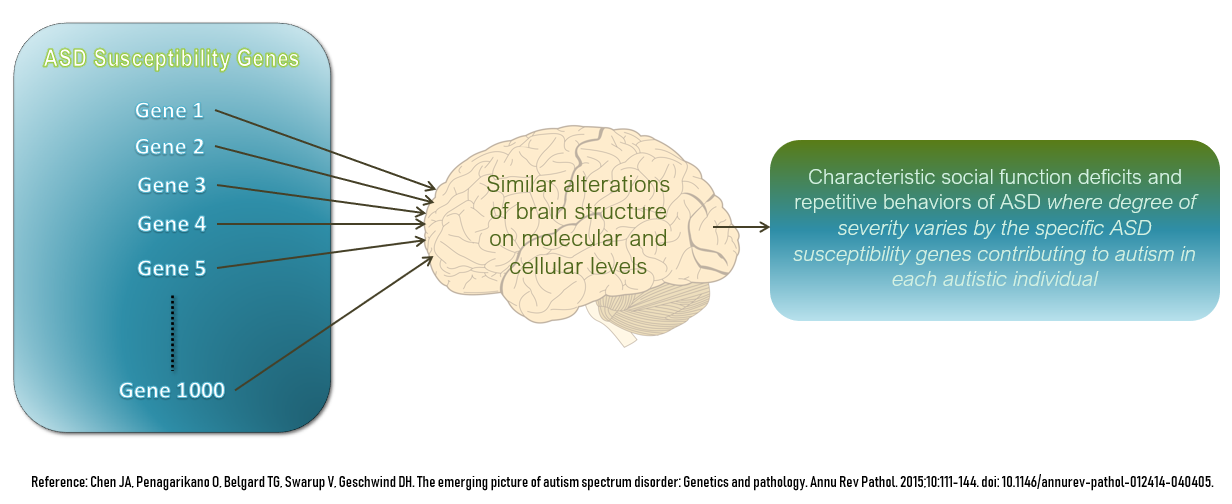|
PDD-NOS
A pervasive developmental disorder not otherwise specified (Including atypical autism) (PDD-NOS) is one of four disorders which were collapsed into the diagnosis of autism spectrum disorder in the DSM-5 and also was one of the five disorders classified as a pervasive developmental disorder (PDD) in the DSM-IV. According to the DSM-4, PDD-NOS is a diagnosis that is used for "severe or pervasive impairment in the development of reciprocal social interaction and/or verbal and nonverbal communication skills, or when stereotyped behavior, interests, and/or activities are present, but the criteria are not met for a specific PDD" or for several other disorders. PDD-NOS includes atypical autism, because the criteria for autistic disorder are not met, for instance because of late age of onset, atypical symptomatology, or subthreshold symptomatology, or all of these. Even though PDD-NOS is considered milder than typical autism, this is not always true. While some characteristics may be mi ... [...More Info...] [...Related Items...] OR: [Wikipedia] [Google] [Baidu] |
Pervasive Developmental Disorder
The diagnostic category pervasive developmental disorders (PDD), as opposed to specific developmental disorders (SDD), is a group of disorders characterized by delays in the development of multiple basic functions including socialization and communication. The pervasive developmental disorders include autism, Asperger syndrome, pervasive developmental disorder not otherwise specified (PDD-NOS, i.e., all autism spectrum disorders SD, childhood disintegrative disorder (CDD), overactive disorder associated with mental retardation and stereotyped movements, and Rett syndrome. The first four of these disorders are commonly called the autism spectrum disorders; the last disorder is much rarer, and is sometimes placed in the autism spectrum and sometimes not. The terminology PDD and ASD is often used interchangeably and varies depending on location. The two have overlapping definitions but are defined differently by the Diagnostic and Statistical Manual of Mental Disorders, 5th editio ... [...More Info...] [...Related Items...] OR: [Wikipedia] [Google] [Baidu] |
Asperger Syndrome
Asperger syndrome (AS), also known as Asperger's, is a former neurodevelopmental disorder characterized by significant difficulties in Interpersonal relationship, social interaction and nonverbal communication, along with restricted and repetitive patterns of behaviour and interests. The syndrome is no longer recognised as a diagnosis in itself, having been merged with other disorders into Autism spectrum, autism spectrum disorder (ASD). It was considered to differ from other diagnoses that were merged into ASD by relatively unimpaired language development, spoken language and cognitive development, intelligence. The syndrome was named after the Austrian Pediatrics, pediatrician Hans Asperger, who, in 1944, described children in his care who struggled to form friendships, did not understand others' Nonverbal communication, gestures or Empathy#Cognitive empathy, feelings, engaged in one-sided conversations about their favourite interests, and were clumsy. In 1994, the diagno ... [...More Info...] [...Related Items...] OR: [Wikipedia] [Google] [Baidu] |
Autism Spectrum Disorders
The autism spectrum, often referred to as just autism or in the context of a professional diagnosis autism spectrum disorder (ASD) or autism spectrum condition (ASC), is a neurodevelopmental disorder, neurodevelopmental condition (or conditions) characterized by difficulties in Social relation, social interaction, verbal and nonverbal communication, and the presence of repetitive behavior and restricted interests. Other common signs include unusual responses to Multisensory integration, sensory stimuli. Autism is generally understood as a ''spectrum disorder'', which means that it can manifest differently in each person: any given autistic individual is likely to show some, but not all, of the characteristics associated with it, and the person may exhibit them to varying degrees. Some autistic people remain nonverbal autism, nonspeaking over the course of their lifespan, while others have relatively unimpaired spoken language. There is large variation in the level of support peop ... [...More Info...] [...Related Items...] OR: [Wikipedia] [Google] [Baidu] |
Autism Spectrum Disorder
The autism spectrum, often referred to as just autism or in the context of a professional diagnosis autism spectrum disorder (ASD) or autism spectrum condition (ASC), is a neurodevelopmental disorder, neurodevelopmental condition (or conditions) characterized by difficulties in Social relation, social interaction, verbal and nonverbal communication, and the presence of repetitive behavior and restricted interests. Other common signs include unusual responses to Multisensory integration, sensory stimuli. Autism is generally understood as a ''spectrum disorder'', which means that it can manifest differently in each person: any given autistic individual is likely to show some, but not all, of the characteristics associated with it, and the person may exhibit them to varying degrees. Some autistic people remain nonverbal autism, nonspeaking over the course of their lifespan, while others have relatively unimpaired spoken language. There is large variation in the level of support peop ... [...More Info...] [...Related Items...] OR: [Wikipedia] [Google] [Baidu] |
Autism
The autism spectrum, often referred to as just autism or in the context of a professional diagnosis autism spectrum disorder (ASD) or autism spectrum condition (ASC), is a neurodevelopmental condition (or conditions) characterized by difficulties in social interaction, verbal and nonverbal communication, and the presence of repetitive behavior and restricted interests. Other common signs include unusual responses to sensory stimuli. Autism is generally understood as a ''spectrum disorder'', which means that it can manifest differently in each person: any given autistic individual is likely to show some, but not all, of the characteristics associated with it, and the person may exhibit them to varying degrees. Some autistic people remain nonspeaking over the course of their lifespan, while others have relatively unimpaired spoken language. There is large variation in the level of support people require, and the same person may present differently at varying times. Historically ... [...More Info...] [...Related Items...] OR: [Wikipedia] [Google] [Baidu] |
DSM-5
The ''Diagnostic and Statistical Manual of Mental Disorders, Fifth Edition'' (DSM-5), is the 2013 update to the ''Diagnostic and Statistical Manual of Mental Disorders'', the taxonomic and diagnostic tool published by the American Psychiatric Association (APA). In the United States, the DSM serves as the principal authority for psychiatric diagnoses. Treatment recommendations, as well as payment by health care providers, are often determined by DSM classifications, so the appearance of a new version has practical importance. The DSM-5 is the only DSM to use an Arabic numeral instead of a Roman numeral in its title, as well as the only living document version of a DSM. The DSM-5 is not a major revision of the DSM-IV-TR but there are significant differences. Changes in the DSM-5 include the reconceptualization of Asperger syndrome from a distinct disorder to an autism spectrum disorder; the elimination of subtypes of schizophrenia; the deletion of the "bereavement exclusion" for ... [...More Info...] [...Related Items...] OR: [Wikipedia] [Google] [Baidu] |
Clinical Psychology
Clinical psychology is an integration of social science, theory, and clinical knowledge for the purpose of understanding, preventing, and relieving psychologically based distress or dysfunction and to promote subjective well-being and personal development. Plante, Thomas. (2005). ''Contemporary Clinical Psychology.'' New York: Wiley. Central to its practice are psychological assessment, clinical formulation, and psychotherapy, although clinical psychologists also engage in research, teaching, consultation, forensic testimony, and program development and administration.Brain, Christine. (2002). ''Advanced psychology: applications, issues and perspectives.'' Cheltenham: Nelson Thornes. In many countries, clinical psychology is a regulated mental health profession. The field is generally considered to have begun in 1896 with the opening of the first psychological clinic at the University of Pennsylvania by Lightner Witmer. In the first half of the 20th century, clinical psych ... [...More Info...] [...Related Items...] OR: [Wikipedia] [Google] [Baidu] |
Neurological Disorders In Children
Neurology (from el, νεῦρον (neûron), "string, nerve" and the suffix -logia, "study of") is the branch of medicine dealing with the diagnosis and treatment of all categories of conditions and disease involving the brain, the spinal cord and the peripheral nerves. Neurological practice relies heavily on the field of neuroscience, the scientific study of the nervous system. A neurologist is a physician specializing in neurology and trained to investigate, diagnose and treat neurological disorders. Neurologists treat a myriad of neurologic conditions, including stroke, seizures, movement disorders such as Parkinson's disease, autoimmune neurologic disorders such as multiple sclerosis, headache disorders like migraine and dementias such as Alzheimer's disease. Neurologists may also be involved in clinical research, clinical trials, and basic or translational research. While neurology is a nonsurgical specialty, its corresponding surgical specialty is neurosurgery. Histor ... [...More Info...] [...Related Items...] OR: [Wikipedia] [Google] [Baidu] |
Occupational Therapy
Occupational therapy (OT) is a global healthcare profession. It involves the use of assessment and intervention to develop, recover, or maintain the meaningful activities, or ''occupations'', of individuals, groups, or communities. The field of OT consists of health care practitioners trained and educated to improve mental and physical performance. Occupational therapists specialize in teaching, educating, and supporting participation in any activity that occupies an individual's time. It is an independent health profession sometimes categorized as an allied health profession and consists of occupational therapists (OTs) and occupational therapy assistants (OTAs). While OTs and OTAs have different roles, they both work with people who want to improve their mental and or physical health, disabilities, injuries, or impairments. The American Occupational Therapy Association defines an occupational therapist as someone who "helps people across their lifespan participate in the thing ... [...More Info...] [...Related Items...] OR: [Wikipedia] [Google] [Baidu] |
Physical Therapy
Physical therapy (PT), also known as physiotherapy, is one of the allied health professions. It is provided by physical therapists who promote, maintain, or restore health through physical examination, diagnosis, management, prognosis, patient education, physical intervention, rehabilitation, disease prevention, and health promotion. Physical therapists are known as physiotherapists in many countries. In addition to clinical practice, other aspects of physical therapist practice include research, education, consultation, and health administration. Physical therapy is provided as a primary care treatment or alongside, or in conjunction with, other medical services. In some jurisdictions, such as the United Kingdom, physical therapists have the authority to prescribe medication. Overview Physical therapy addresses the illnesses or injuries that limit a person's abilities to move and perform functional activities in their daily lives. PTs use an individual's history and physic ... [...More Info...] [...Related Items...] OR: [Wikipedia] [Google] [Baidu] |
Speech Therapy
Speech is a human vocal communication using language. Each language uses phonetic combinations of vowel and consonant sounds that form the sound of its words (that is, all English words sound different from all French words, even if they are the same word, e.g., "role" or "hotel"), and using those words in their semantic character as words in the lexicon of a language according to the syntactic constraints that govern lexical words' function in a sentence. In speaking, speakers perform many different intentional speech acts, e.g., informing, declaring, asking, persuading, directing, and can use enunciation, intonation, degrees of loudness, tempo, and other non-representational or paralinguistic aspects of vocalization to convey meaning. In their speech, speakers also unintentionally communicate many aspects of their social position such as sex, age, place of origin (through accent), physical states (alertness and sleepiness, vigor or weakness, health or illness), psychological ... [...More Info...] [...Related Items...] OR: [Wikipedia] [Google] [Baidu] |








